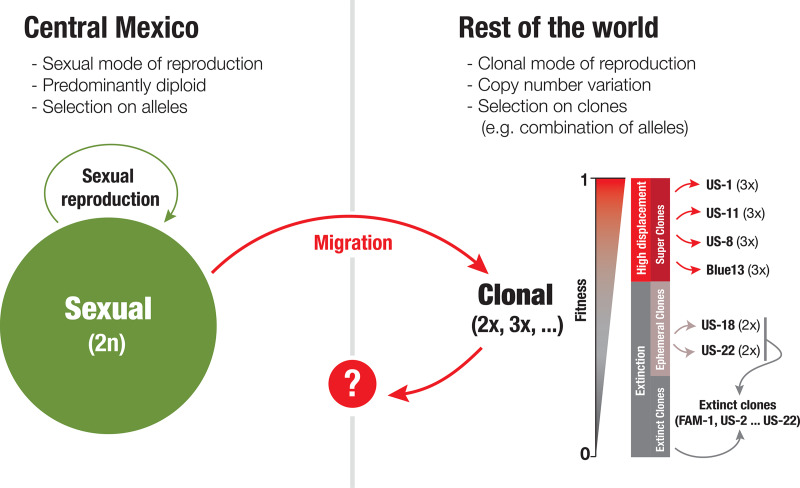FIG 7.
Model of the genomic processes observed to date that are thought to underlie the patterns of emergence observed for clonal lineages of the Irish famine pathogen. This model proposes that sexual populations are diploid, while clonal populations are predominantly triploid. Some clones, likely rare and by chance, are clones that become dominant, displacing prior clonal lineages, as has been observed repeatedly in the United States. These dominant clones are predominantly triploid, including US-8, US-11, US-23, and the aggressive European lineage Blue13_A2 (represented in our sample by 06_3928A), while other lineages that are diploid, such as US-18 and US-22, are ephemeral or cryptic (see Text S4 in reference 53) (9). Sexual reproduction reinforces diploidy, while a triploid status might interfere with sexual reproduction but might confer fitness.

